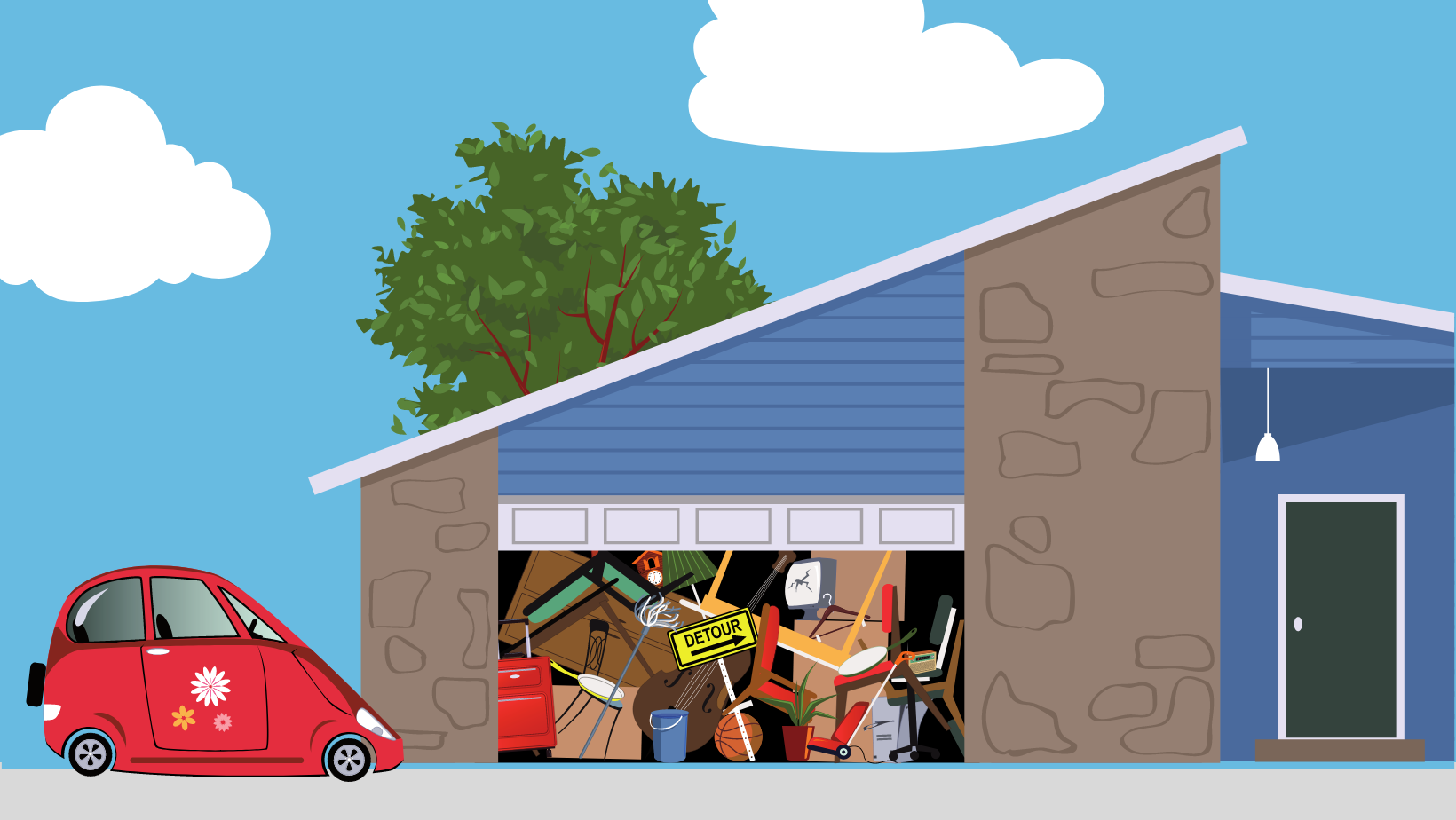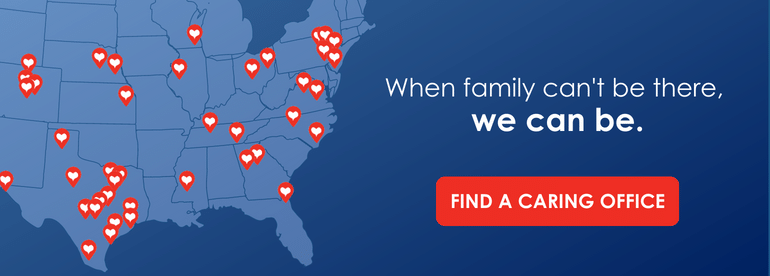As seniors get older, you may see signs of hoarding. Hoarding refers to a behavioral disorder characterized by keeping possessions that don’t provide any value or use to an individual and that interfere with daily living. A strong indication of hoarding is that a senior refuses to throw anything away.
The likelihood of hoarding increases as we age, and once an individual starts hoarding, the behavior typically continues to get worse. Dealing with hoarding behaviors in family members can be frustrating, and it’s not a challenge that many family caregivers anticipate. But a better understanding of hoarding can help you work with your loved one to minimize hazards and achieve a safer living environment.
Why Seniors Hoard
There are a number of different reasons that older adults may hoard things. However, one of the most common reasons is actually loneliness and depression. As we get older, we tend to become more limited in our physical and social activities. Seniors may try to replace that void with things — pets, knickknacks, food, clothes, trash, etc.
But loneliness isn’t the only reason why a senior hoards. Here are some other common triggers for hoarding:
- Change in physical health that prevents a senior from being able to properly clean and tidy the home
- Cognitive changes, like dementia, that interfere with planning and executing tasks
- Stressful life events, such as the loss of a spouse
- Mental health conditions, like depression, OCD, schizophrenia, or anxiety
- Family history of hoarding
- Indecisive personality
- Attention-deficit problems
- Desire for a sense of control
By understanding root cause of hoarding behavior, you can be better equipped to help loved ones overcome it.
RELATED CONTENT: Unexpected Causes of Senior Isolation
Risks of Hoarding
Compulsive hoarding can become a serious health risk for seniors and any other individuals or pets living in the environment. It can ultimately lead to injury and illness. Here are some of the most common health and safety risks of hoarding in the home.
- Pest infestations
- Fire hazards
- Tripping hazards, leading to dangerous falls
- Preventing emergency care
- Unsanitary conditions, like mold or bacteria
- Further isolation as other individuals don’t want to visit
- Food poisoning from expired food and beverages
- Poor air quality
- Neglected home repairs that could lead to safety concerns
Because hoarding can lead to unsafe living conditions, it’s important to work with seniors to address their behavior. Next, we will discuss tips to help seniors who hoard.
RELATED CONTENT: How to Help Your Senior Reduce Clutter
How to Help Seniors Who Hoard
1. Remove immediate dangers.
The first thing you can do to help is to deal with home hazards and safety concerns as soon as possible. These could include expired food, loose cords, sharp edges, narrow pathways, tall piles that could easily fall, and more. Explain that you must take care of these issues because you care about their health, safety, and well-being.
2. Seek treatment for your loved one.
Once home safety is addressed, you should help your loved one get medical attention needed to resolve their hoarding disorder. The underlying cause of hoarding varies from individual to individual. So, it’s important to involve medical professionals to help identify the root cause and appropriate treatment.
A senior may benefit from therapy, medications, or other treatment options to help them resolve issues or triggers related to their hoarding behavior. Treatment can help seniors recognize their bad habits and retrain their brain to adapt to new, healthier behaviors.
Some seniors may also benefit from having a professional caregiver at home. Or even moving to a senior community that can help with hoarding tendencies. They may need daily assistance to help them avoid relapse.
3. Help the senior clean and organize.
When your loved one is ready, help them clean and organize the home. This may not go as smoothly as you might like, so here are some tips to keep in mind:
- Work together: When cleaning, work with the senior as much as possible. Seniors who hoard need to feel in control of the process. Just throwing out their things could distress them and will break their trust in you, which you will need to make any progress.
- Offer choices: Try offering them choices throughout the cleaning process. Should we clean the bathroom or bedroom first? Do you want me to come over on Monday or Wednesday? Would you like to donate this or throw it away?
- Be patient: Know that seniors with hoarding behaviors may be resistant and even angry when you try to help clean up and declutter. Be patient and compassionate as you work together. Never scold your loved one for not wanting to throw something out or for relapsing. This, too, could break their trust in you.
- Start small: It is easy to get overwhelmed by the amount of work to do. So, focus on a small area at a time. Instead of looking at the whole kitchen, focus on one portion of the countertop. As you go, celebrate the small wins. Even if you can help your senior throw out 2 items, that’s progress!
- Set realistic goals: Set goals with your loved one to help you monitor your progress. This can also help you both feel more accomplished. However, make sure your goals are reasonable and not overwhelming. When you achieve a goal together, make sure to celebrate! This will create positive reinforcement and build a senior's confidence.
However, you should know that cleaning up the environment is not a solution to the problem. Seniors will continue their hoarding behavior if it is not addressed. That’s why the previous step of getting treatment from medical professionals is so important.
If you or a loved one would benefit from professional caregiving services to help monitor and address hoarding, reach out to your local Caring team. We understand that hoarding behaviors can be part of the aging process, and our caregivers are trained to help support each client while maintaining their safety at home.


